Winter at Welney Wetland Centre in Norfolk brings us angels of the north: great flocks of Arctic swans, whose snow-white plumage and evocative trumpeting suit the season.
There are whooper swans from Iceland and similar but smaller Bewick’s swans from Russia, both sporting distinctive yellow-and-black beaks. They are a different beast to the familiar orange-billed mute swans at your local park – prettier and altogether wilder.
The Wildfowl and Wetlands Trust reserve at Welney, and the peaty flatlands of west Norfolk, is one of the best places to experience these heavenly visitations. A bit bleak, maybe? Not at all. If you like your creature comforts, this is the winter wildlife spectacle for you.

Visiting Welney Wetland Centre
Welney has a heated observatory to provide a cosy haven during biting cold days. It’s a chance to get up close and personal with the wild birds. There are additional hides across the reserve to gain different perspectives of the fens habitat and its wildlife.
Three times a day, wardens throw corn to the jostling throng of hundreds of eager swans as they crowd up to the glass of the heated, carpeted observatory. At 6.30pm on Saturdays and Sundays there is an extra floodlit performance. The swans’ wild music, piped to loudspeakers inside, is like a big – and very loud – brass band. Quite a din, but strangely beautiful.
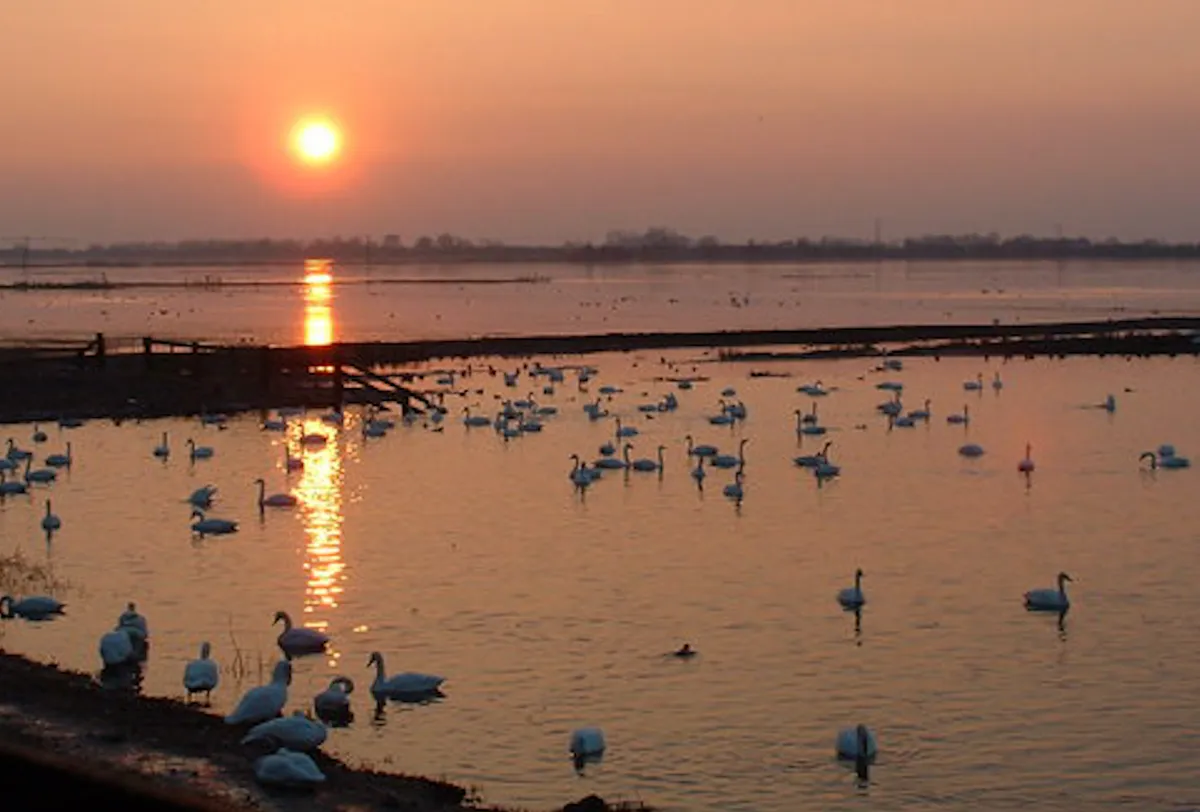
Welney landscape
Welney forms part of the Ouse Washes, an area of fertile pasture that is grazed all summer and in winter provides flood alleviation for the River Great Ouse. It’s under an hour by car from Peterborough or Cambridge, yet feels a world away. As you drive there along razor-straight roads, mostly below sea level, you might see your first swans feasting on sugar-beet tops or potatoes left in the black fields.
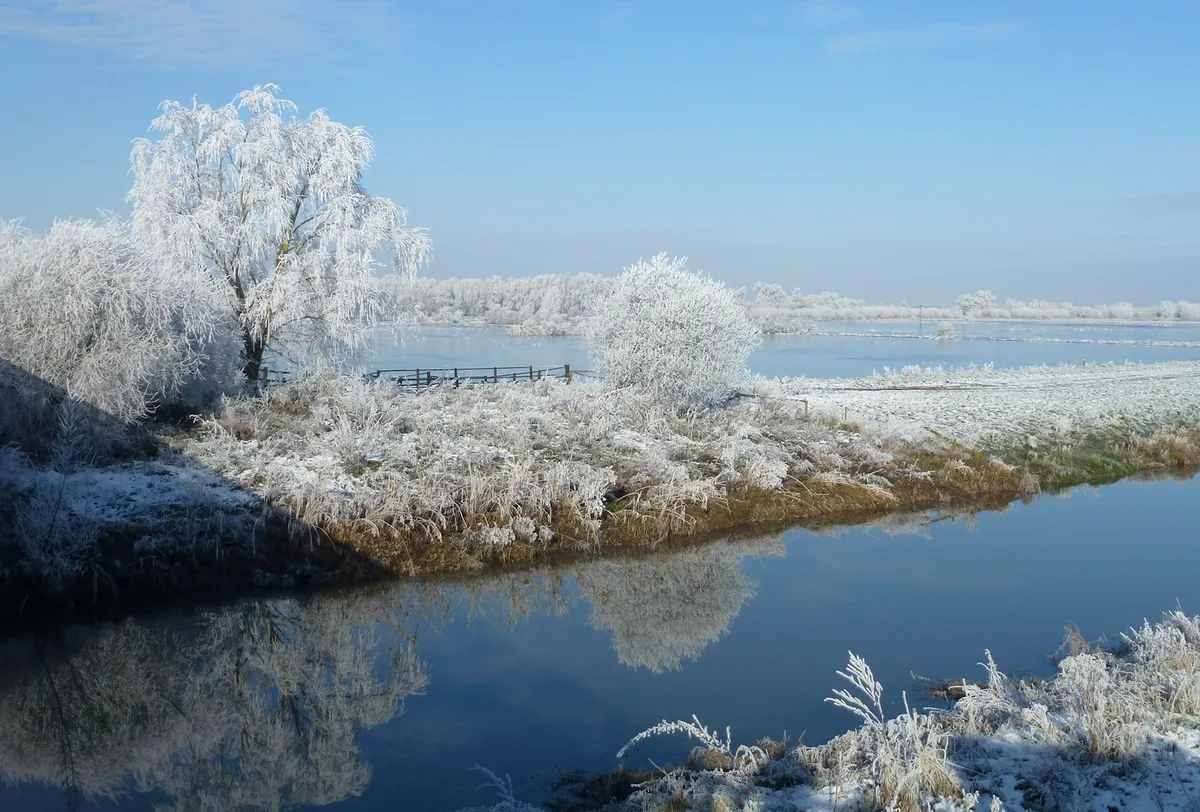
Welney wildlife
The reserve itself has half-a-mile of raised paths that give superb views over the surrounding bird-filled wetland. As well as swans, there are ducks aplenty – pochard, pintail, tufted, teal – and flocks of wading birds, such as godwits, lapwings and golden plovers. Hares frequent a new 300-acre wetland next to the main timber-clad visitor centre. Pop in to the centre, reminiscent of a huge upturned sailing boat, to warm up in the gift shop or Wigeon Café.
Hare
East of the reserve centre, Lady Fen and Bank Fen provide ideal flat, open farmland to look for hares; viewable from the Wigeon Café in the visitor centre. Watch out for a female declining the flirty intentions of the males as she comes into season, chasing and boxing them away. Hares’ large hunched bodies, gangly oversized legs and long, black-tipped ears are a giveaway.
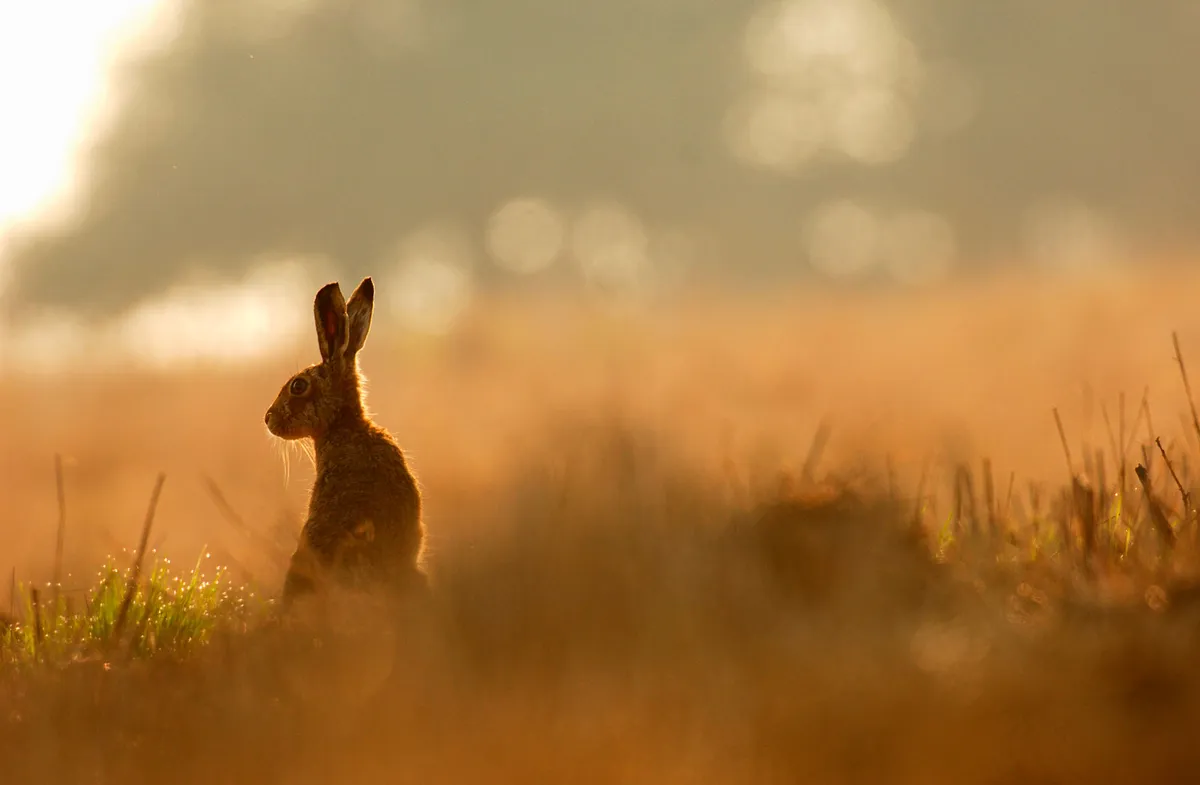
Pochard
Feeding mainly at night on aquatic plants and seeds, the brick-red headed males and soft brown-coloured females are usually snoozing during the day, bobbing around like remote control boats. By late afternoon, they form a tight writhing mass, jostling for prime position in mesmerising flocks waiting for their supper. Compare the number of males with females – they migrate different distances and flocks will often be biased to one gender or the other.
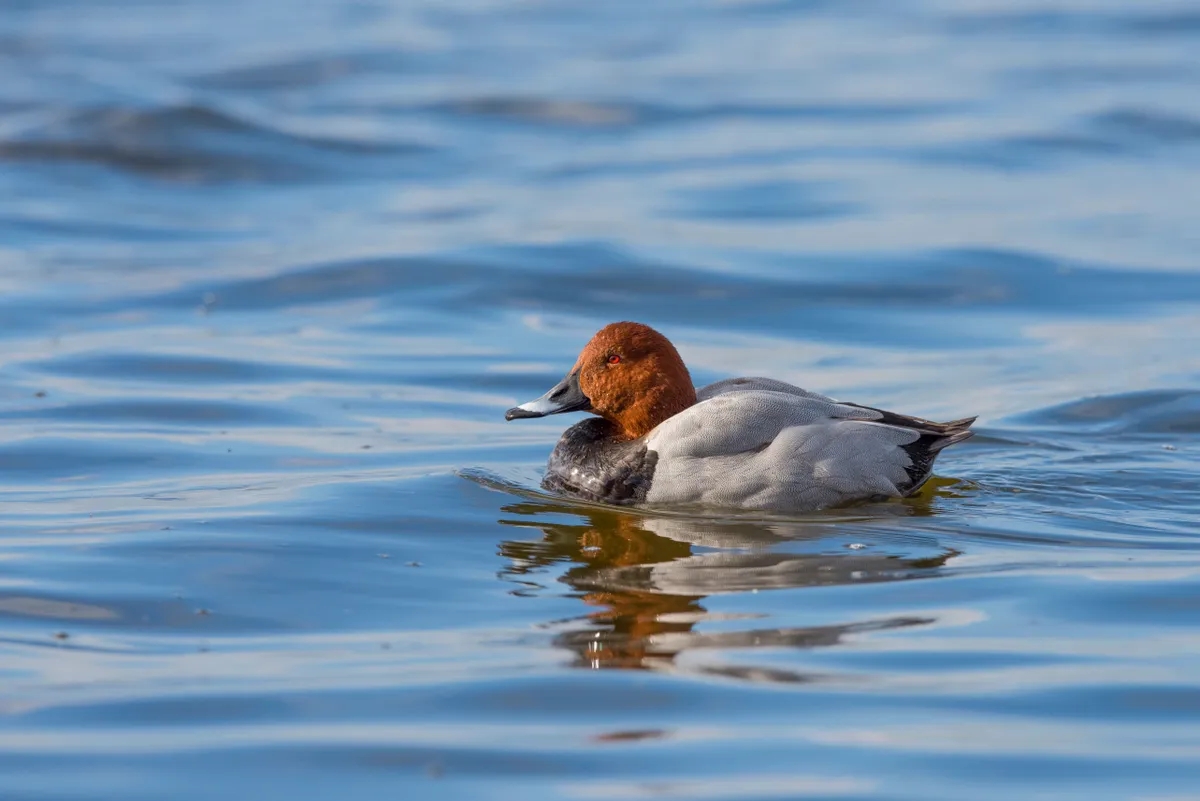
Bewick's swan
Arriving from Arctic Russia, Bewick’s swans are compact, cuter looking versions of whooper swans. Look for the yellow bill colour, which stops short of the nostrils. Thousands make their way south, travelling through northern Europe before hopping across the Channel to escape the cold. Listen for their distinctive trumpet-like calls as they announce their arrival each evening with a complement of head nodding and flashing of pure-white wings.

Pintail
Also known as sea pheasants, the males have elegant long tails, sky-blue bills and chocolate-brown heads, while both sexes have graceful bodies and slender necks. Watch for displaying males, stretching their heads up and back while showing off their fine, simply streaked backs and ‘pin tails’. Sometimes the males battle it out, chest-to-chest like rutting deer, or simply peck at rivals who venture too close to their partners.
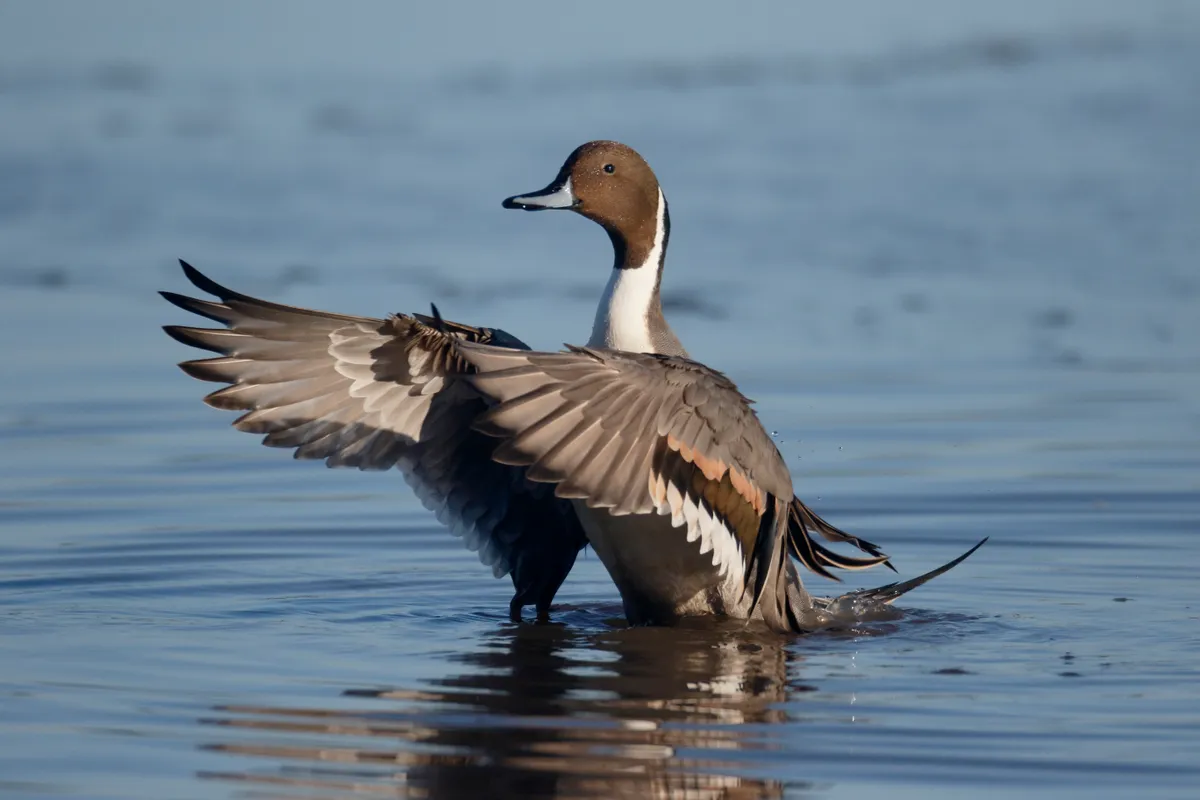
Whooper swan
Our largest wintering swan, the whooper migrates from Iceland, making the journey across the sea to Scotland, where many stop while others continue south to Welney. Look for longer necks and angled beaks. The yellow bill colour extends beyond the nostrils. Like the Bewick’s, they gather in family groups, nosily calling like a cacophony of vuvuzelas. The juveniles are soft powder-grey with delicate pink flushes on the bills.
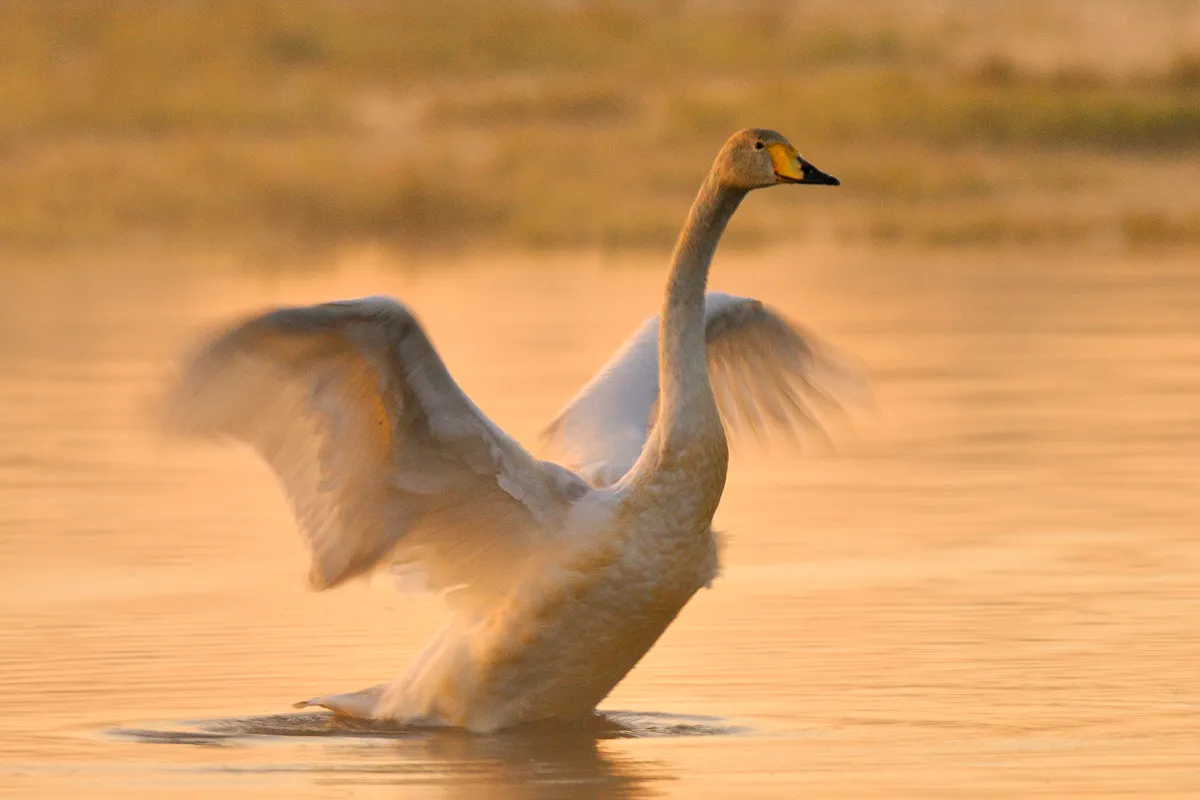
How do you get to Welney Wetland Centre?
The centre is 12 miles north of Ely, 26 miles north of Cambridge and 33 miles east of Peterborough. It is two miles south of Welney village, turning off the A1101 at the New Bedford suspension bridge, signposted Ten Mile Bank. Occasionally, the A1101 between Welney village and suspension bridge is flooded. Check the website before setting off.
Where to eat
Wigeon Café
WWT Welney Wetland Centre
Fine selection of hot and cold food.
Where to stay
Lamb and Flag Inn
Main Street, Welney, Wisbach, PE14 9RB
01354 610242
www.lambandflagwelney.co.uk
Traditional bed and breakfast welcoming fishermen, wildfowlers and bird watchers all year round.
Words: Ben Hoare
